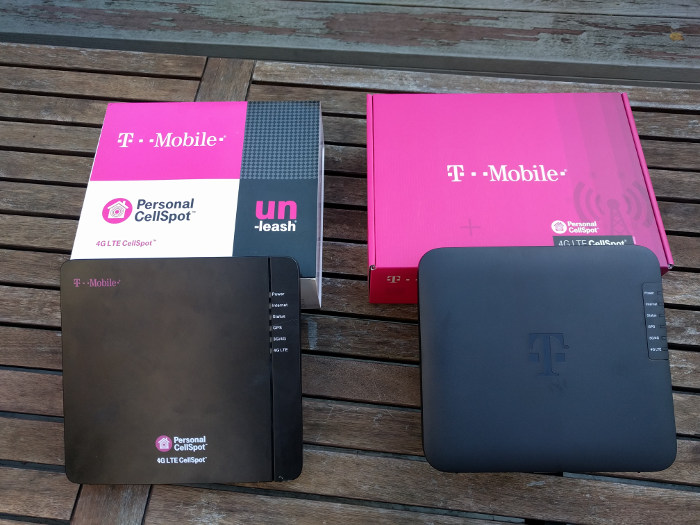
T-Mobile recently released a new version of their 4G LTE CellSpot. This is a device that you plug in to your home router to provide LTE coverage to any T-Mobile user within a radius of roughly 50 feet. Unlike the similarly-named 4G LTE Signal Booster, the CellSpot requires no existing LTE service and instead uses your home internet connection as a backhaul.
Let's compare the old (V1) and new (V2) versions of the CellSpot. T-Mobile claims several benefits for the V2, although many of them seem fairly vague ("Software/hardware fixes"). Here are my experiences with the V1 and V2.
The V1 did act up occasionally, typically crashing and restarting without requiring any intervention. I upgraded to the V2 primarily hoping that it would be more stable. So far, I haven't had any problems, but this will obviously require some more time to evaluate fully.
I was also excited about the smaller form factor, given the space constraints of living in SF. The V1 wasn't huge, but it was definitely bigger than your average modem/router (8.5" x 8" x 1.25"). However, it turns out that V2 isn't really that much more compact: 8.25" x 7.5" x 1.5". Plus, the giant rigid stand that sticks out the back several inches to "improve vertical stability" makes it feel really bulky. Surprisingly, even the box of the V2 is bigger than the box for the V1.
One nice change I discovered is the reduced power consumption. V1 used 18W on average, while V2 uses only 11W. That may not sound like a huge difference, but in California a 7-watt difference could be $10-20 / year in electricity savings.
Finally, V2 supports LTE bands 2 and 4, while V1 only supports band 4. This is unlikely to make a difference for you unless you were already having problems with reception with the V1. Band 2 is supposed to penetrate buildings better, so you'll likely get better reception in further rooms of your home (again, not really a concern in a 1-BR SF apartment).
In the end, the 4G LTE CellSpot V2 is a worthy improvement over V1, but it's probably not worth it for existing customers to upgrade, unless you have stability or performance problems with your V1, or are really concerned about the small electricity savings.